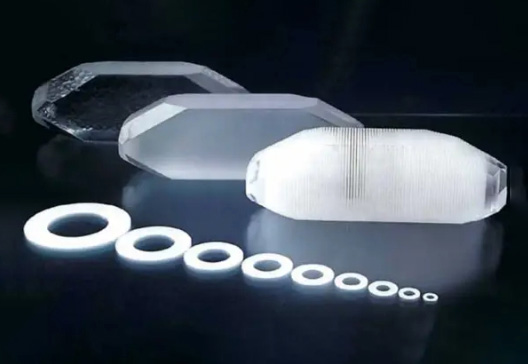Where Molybdenum Was Discovered
Molybdenum Discovery and Industry Development
A brief history of molybdenum discovery
Although molybdenum was found in the late Eighteenth Century, it had been used before it was found, such as in the Fourteenth Century, the Japanese used molybdenum steel knives. In the sixteenth Century, molybdenite was similar to lead, galena, and graphite in its appearance and properties, and was used as graphite. The Europeans also called these minerals "molybdenite" at that time.
In 1754, Swedish chemist Bengt Andersson Qvist tested the molybdenite and found there was no lead, so he thought molybdenite and galena were not the same substance.
In 1778, Scheler, a Swedish chemist, found that nitric acid did not react with graphite and reacted with molybdenite to obtain a white powder, which was boiled with an alkali solution to crystallize a salt. He believes that the white powder is a metal oxide, mixed with charcoal after intense heat, and no metal, and when it was the original molybdenite and sulfur together after heating, so he thought molybdenite is an unknown mineral.
Inspired by Scheler, in 1781, Hjelm, Sweden, used the carbon reduction method to separate a new metal from the white powder and named the metal "Molybdenum".
Development of the molybdenum industry
Because molybdenum is easy to oxidize and brittleness and molybdenum smelting and processing level is limited, molybdenum has not been able to be processed mechanically, so it can not be applied to industrial production on a large scale, and only some molybdenum compounds are used. In 1891, France's Snyder Schneider took the lead as molybdenum alloying element to produce molybdenum armor plate, found its performance was superior, and the density of molybdenum is only half of the tungsten, gradually replaced the tungsten to become alloy elements of steel, thus beginning the industrial application of molybdenum.
In 1900, the ferromolybdenum production process was developed, molybdenum steel can meet the special performance need of gun steel also been discovered, which made the production of molybdenum steel has been developed rapidly in 1910. Since then, molybdenum has become an important component of heat-resistant and anti-corrosion structural steels and has also become an important component of nonferrous metals nickel and chromium alloys.
The metal molybdenum is widely used in the electrical industry. One of the reasons is that the production of powder metallurgy and pressure processing technology of these two kinds of dense metal has been studied successfully, which can be used in production, the reason is that the outbreak of the First World War led to a surge in demand for tungsten, and molybdenum supply shortage has accelerated as much high hardness and impact resistance of tungsten steel substitutes. With the growth of demand for molybdenum, people began to search for new sources of molybdenum, and finally, a large Clay Max molybdenum deposit was discovered in Colorado, USA, and began to be mined in 1918.
To address the sharp decline in demand for molybdenum after the First World War, people began to study the application of molybdenum in new civilian industries, such as the use of alloy steels containing molybdenum for the production of wheels. In 1930, researchers proposed the forging and heat treatment of molybdenum-based high-speed steel must have the appropriate degree, this discovery opened a new application market for molybdenum, as alloying elements have also entered a new stage of molybdenum in steel and other fields. By the end of the 1930s, molybdenum had become a widely used industrial raw material. During World War II, the American clay Max molybdenum company developed a vacuum arc smelting process, in which 450-1000 kilograms of molybdenum ingots were obtained, which opened the way for molybdenum as a structural material.
Now, the highly pure molybdenum material, nanocomposite, is the main direction of research, and the molybdenum application scope is wider and wider, including steel, petroleum, chemical, electrical and electronic technology, medicine, and agriculture fields.
Classification of molybdenum ores
Single molybdenum ore
The main useful component of the ore is molybdenum.

Copper molybdenum ore
Molybdenite ore is associated with sulfide minerals of various copper minerals.

Molybdenum ore
Molybdenite ore is associated with tungsten ore.

Carbonaceous copper molybdenum ore
The ore contains organic carbon and carbonaceous shale. Molybdenite and carbonaceous siliceous shale coexist, this kind of carbonaceous copper-molybdenum ore is black, dense, massive, solid, containing 2.94% of carbon, and the density is 2.73g/m3. Carbonaceous shale is composed of microcrystalline quartz, fine carbonaceous particles, small amounts of iron oxide particles, and argillaceous chlorite.




